7 amazing facts about kangaroos that will amaze you

Kangaroos are unique and distinctive animals that live on the Australian continent. The kangaroo is the largest of all the biting mammals around the world, and has an out-of-the-ordinary appearance that attracts attention. Kangaroos are distinguished by their ability to jump long distances and withstand a strong body suitable for life in the harsh wild. In this article, we'll look at kangaroos' life, their physical description, eating habits, and the challenges they face in maintaining the survival of the species.
Show key points
- Kangaroos are uniquely adapted marsupials native to Australia, known for their powerful jumping ability and distinct appearance.
- There are over 60 species of kangaroos, with notable types such as the red, eastern gray, western gray, and black kangaroo, each adapted to different regions and environments.
- Kangaroos demonstrate exceptional environmental adaptations with muscular bodies, strong tails, and the ability to survive without water for extended periods.
- ADVERTISEMENT
- Their reproductive system is notable for the pouch in which newborns develop, supported by strong maternal care and social group structures.
- Kangaroos are herbivores with a specialized diet, capable of digesting tough vegetation and drawing water from plants to thrive in arid conditions.
- Habitat destruction, hunting, and climate change pose serious threats to kangaroo populations, prompting conservation efforts focused on habitat restoration and legal protection.
- In Australian culture and tourism, kangaroos serve as national symbols and major attractions, featuring in festivals, souvenirs, and wildlife encounters for visitors.
1. Classification of kangaroos and its different types.

Kangaroos are among the unique and interesting animals, as they are widespread in different regions of the Australian continent. The kangaroo is part of the kangaroo family, which contains more than 60 different species varying in size, behavior and habitat.
Recommend
Among the main species of kangaroo is the red kangaroo, which is the largest kangaroo and the largest rodent on earth. Red kangaroos live in desert areas and grasslands, and are characterized by their tremendous strength and speed.
Then there are the eastern gray kangaroos that are found in the eastern and southern regions of the country. This quality is the most common and possesses a medium-sized body and sociable behavior while living in small groups.
There is also a western gray kangaroo that lives in the western and southwestern regions. It is distinguished by its large size and has a sociable behavior similar to the oriental gray kangaroo.
There is a small black kangaroo that lives in rocky terrain and mountainous areas. It is distinguished by its dark color and relatively small size.
In addition to these species, there are many other species such as blue kangaroos, yellow kangaroos, and others. Each species has unique characteristics and behaviours, and plays an important role in the Australian ecosystem.
Despite the great diversity of kangaroos, some species face challenges in survival due to human threats and habitat loss. It is therefore important that we continue to study and protect these amazing creatures to ensure that Australian life continues to be diversified.
2. The body and environmental adaptation of kangaroos.
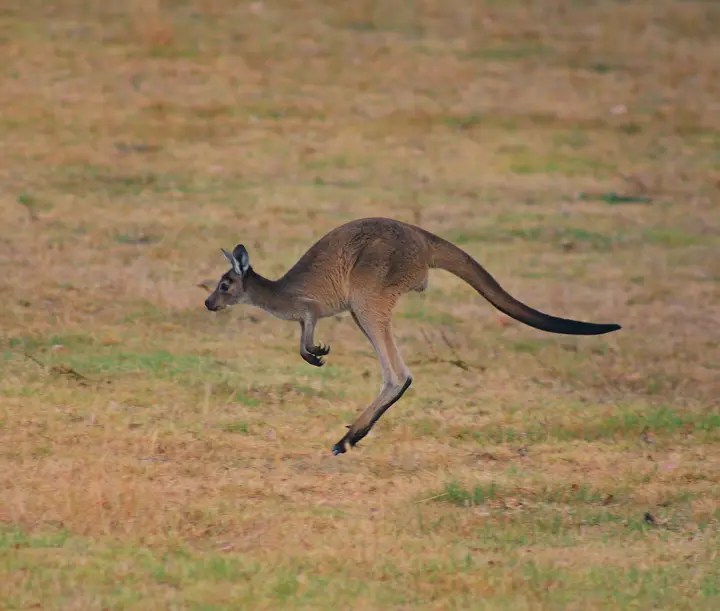
The body qualities of kangaroos are unique and perfectly adapted to the harsh environment in which they live. Kangaroos have a huge and strong body, reaching a length of two meters and weighing up to 90 kilograms, making it the largest biting mammal in the world.
All types of kangaroos are distinguished by their strong and long legs that enable them to jump easily and very quickly. Some kangaroos can jump distances of up to 9 meters in the air, and can travel at speeds of up to 60 kilometers per hour, enabling them to escape or move quickly in their wild environment.
In addition, the kangaroo has a long and powerful tail that it uses for balance while jumping and also as a motivation when moving fast. Kangaroos also use their tail as a kickstand while sitting and standing in a standing position.
The kangaroo's adaptation to the harsh environment of Australia is manifested in the development of its body. He has developed strong jaws and sharp teeth that enable him to cut the coarse grasses and plants that are his main food. It also has an amazing ability to withstand hot and dry weather, as it can stay for long periods without drinking water, it benefits from the water found in the plants it feeds on.
The kangaroo's strong body and intelligent environmental adaptation make it an unavoidable force in the Australian wilderness, and is a true symbol of adaptation and survival in a challenging environment and multiple challenges.
3. Lifestyle and breeding methods for kangaroos.
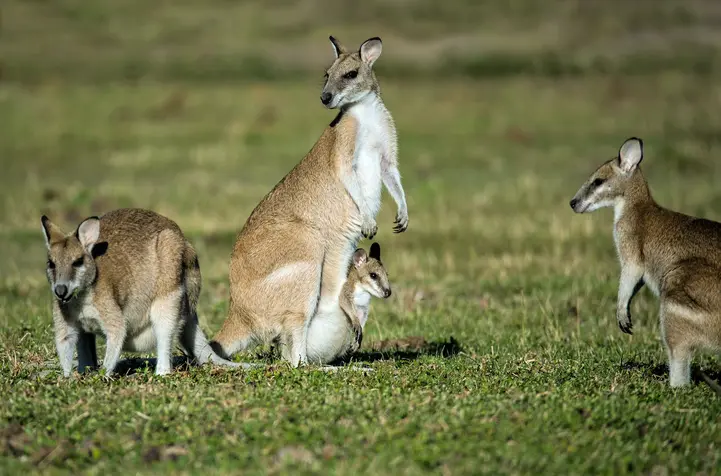
Kangaroo life has a smoothness and uniqueness that makes it the focus of attention of researchers and scientists. Kangaroos live in social groups known as "kangaroo bags", consisting of female kangaroos and their young. These groups are organized hierarchically, with the oldest and most experienced kangaroo being the leader and responsible for protecting and directing the group.
Kangaroo breeding periods continue, mating takes place throughout the year but activity increases during the spring. Sexual relations between male and female kangaroos are formed by participating in parade and jumping manifestations. When the female is ready to mat, the male fertilizes her by biting her in the back.
The gestation duration of kangaroo ranges between 32-39 days after which the small fetus is born, which depends throughout its growth period inside the kangaroo mother's pocket. In this period, the fetus feeds on kangaroo milk and grows and develops inside the pocket, and this period may last from 6-11 months depending on the type of kangaroo.
Once the fetus is able to survive and move independently, it comes out of the mother's pocket and begins to explore the outside world and accompany the older kangaroos in the group. Strong bonds are formed between the little kangaroo and the larger group members, and the little ones learn by watching and experimenting to become active members of the group.
The breeding process of kangaroos is distinguished by its unique adaptation and adaptability to a harsh environment. The social organization of kangaroo bags and the careful care of mothers for their young help the survival of this wonderful animal and ensure its continuity in the wild world.
4. Special diet and food variety.
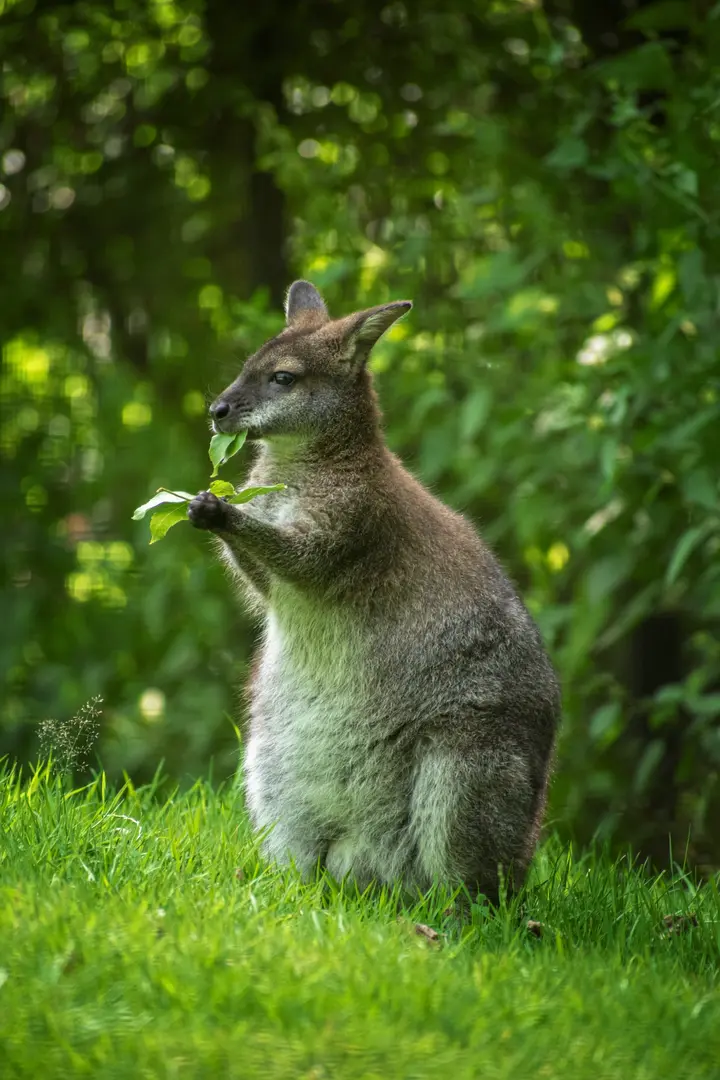
The kangaroo diet is unique and surprising, as it is characterized by its diversity and adaptability to the difficult environmental conditions of Australia. Kangaroos feed mostly on herbs and leaves, and are one of the most specialized plant animals in the world. The kangaroo diet is based on the availability of green pastures and diverse plants, which helps meet its nutritional needs.
Wet plant-based herbs are one of the main food sources for kangaroos, as they are high in fiber and water. Kangaroos chew mature herbs slowly and thoroughly, helping them extract the necessary nutrients. The types of herbs that kangaroos feed on are varied and include drought-resistant herbs and herbs that grow in mountainous and rugged areas.
In addition to herbs, kangaroos also feed on willow leaves and shrubs. Hard leaves of plant shrubs are an important source of food for kangaroos, as they contain large amounts of nutrients such as proteins, fiber and minerals. Kangaroos can feed on leaves that are unsuitable for most other animals, showing their unique adaptation to make the most of available food sources.
The ability to extract fluids from plant-based food is one of the challenges of the kangaroo diet. The large follicles in his stomach turn kangaroo's plant-based food into green algae that can be effectively digested, and the probiotics in his stomach benefit from fiber and other nutrients. This unique adaptation helps kangaroos absorb the fluids needed to survive in a harsh, dry environment.
The kangaroo diet is exceptional and amazing in adapting to the Australian environment. By eating hard herbs and leaves, kangaroos are able to meet their nutritional needs in a challenging environment. This unique system reflects the evolution of kangaroos over the ages and their ability to take advantage of the variety of food available in their natural habitat.
5. Threats faced by kangaroos and species survival efforts.
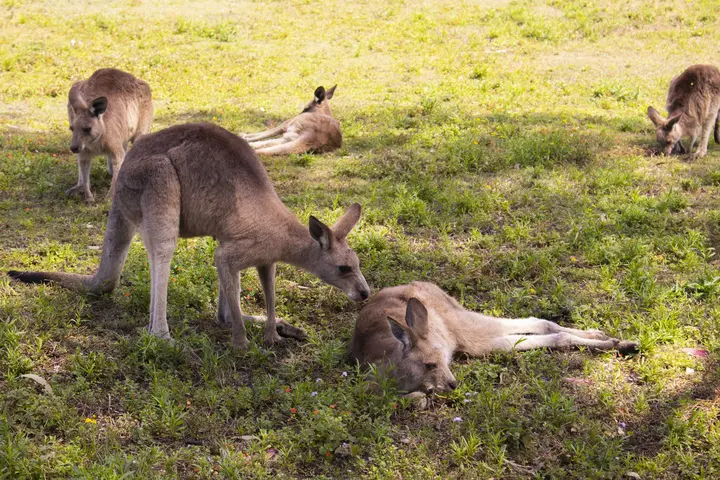
Kangaroos live in a harsh and diverse environment, but they face new threats that put their survival at stake. Kangaroos face many challenges, ranging from habitat loss due to changes in the natural environment to the impact of their ecological balance due to human intervention. One of the main threats it faces is poaching kangaroos, as they are hunted for their meat and skins. In addition, kangaroos suffer habitat loss as cities expand and wildland is converted to agricultural land. Efforts to sustain these species require strong domestic and international collaboration, with strict environmental protection policies and the encouragement of scientific research to better understand the needs of kangaroos and the impact of climate change on them. In order to ensure the survival of kangaroos, the protection of nature reserves and the provision of a suitable environment for breeding and the restoration of lost habitats must also be encouraged. Kangaroo conservation is not an individual responsibility, but should be a joint effort involving governments, non-governmental organizations, the community and the public at large.
6. The role of kangaroos in the Australian environment.
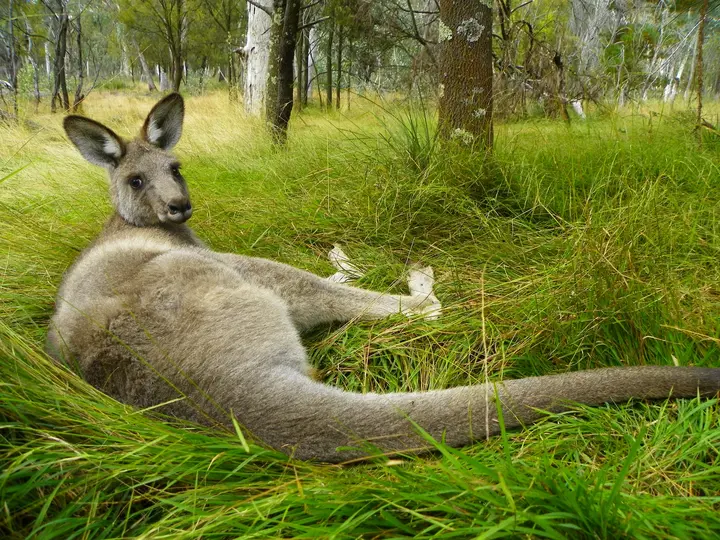
Kangaroos are major mammals in the Australian environment and play a vital role in ecosystem balance. They are considered effective in the conservation and conservation of the natural environment and the conservation of biodiversity in the region. What is their unique role? And how does their presence affect the Australian environment?
Kangaroos are one of the most widespread animals in the vast territory of Australia. Thanks to their long jumping ability and organized social groups, kangaroos can reach remote places and unexplored areas, making them scattered across the country. Different kangaroo species vary according to the areas in which they live, such as the large gray kangaroo, the lamb kangaroo and the red kangaroo.
Seed spreaders and land protectors are one of the main roles of kangaroos in the Australian environment. When kangaroos eat herbs and plants, they can keep the seeds of these plants in their stretchy pockets during digestion. When kangaroos move, the seeds fall out of the pockets, thus contributing to the spread of seeds and distribution in new places. This vital process contributes to the regeneration of vegetation and the increase in biodiversity in the region.
In addition, kangaroo life in the wild affects their surroundings. The stress of grazing and jumping on the ground causes a change in the plants and trees found in areas where kangaroos live. This may raise dust and expand the spectrum of biodiversity in the environment. Kangaroos who love grasses and plants feed on soft plants that may thrive after the grass period on the grounds crossed by kangaroo groups, creating a vital role in plant health and diversity.
Despite the important role kangaroos play in the Australian environment, they face ongoing challenges to species survival and cope with changes in climate and habitat loss. Therefore, we must work to protect the natural habitat and take care of the ecological balance of kangaroos and the rest of the living creatures in Australia's unique environment.
7. The use of kangaroos in culture and tourism.
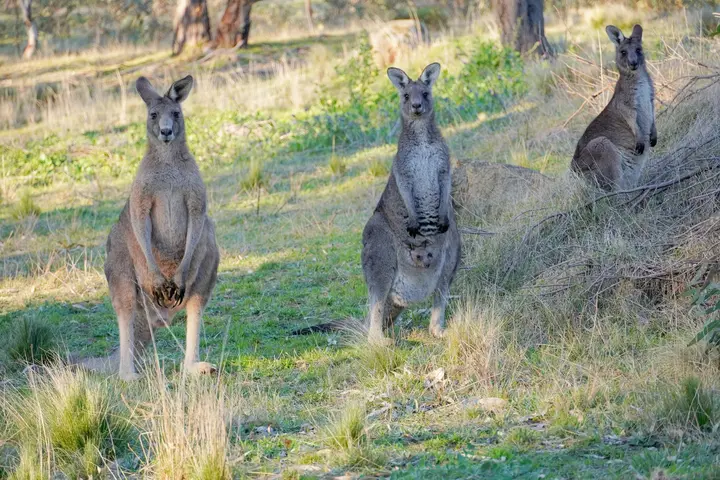
While kangaroos are wild animals that live in Australia's rugged wilderness, they also play an important role in the culture and tourism of this beautiful country. Kangaroos are an icon that cannot be ignored in Australian culture and are also a major tourist attraction. Learn how kangaroos are used in culture and tourism and how they enrich the visitor experience.
From the first encounter of European settlers with kangaroos, they immediately realized the symbolism of this unique animal. The kangaroo has become a national symbol of Australia, reflecting the country's strength and the challenge of the harsh wilderness. Kangaroos have been frequently depicted in Australian arts and literature, where they are used to embody values of resilience and fortitude. You can find images of kangaroos on Australian coins, postage stamps, flags and many tourist products, emphasizing their important role in national culture.
In addition, kangaroos are also used in tourism to attract visitors to Australia. Visiting the open natural areas where kangaroos live is an unforgettable opportunity for tourists to see this wonderful animal up close. Private sightseeing tours are organized to see and interact with kangaroos in their natural habitat. Visitors can take their photos and videos with kangaroos and share them on social media, enriching and memorable their tourism experience.
Moreover, festivals are also held in Australia in honor of kangaroos. These festivals bring together tourists and locals to celebrate kangaroo culture and promote awareness of its importance in the country. This celebration includes artistic performances, sports competitions and interviews with kangaroo experts. It also displays several kangaroo-inspired souvenir products, which visitors can purchase as a commemoration of their visit.
Kangaroos occupy a special place in Australian culture and are an integral part of the tourist experience in this country. Thanks to its symbolism and wide presence in tourism products and events, the kangaroo contributes to attracting visitors and enriching Australia's diverse and distinctive culture. If you are planning to visit Australia, be sure to include an experience of watching and interacting with this wonderful animal for an unforgettable cultural experience.







